What if we told you there's a tax-saving scheme that could outperform your wildest expectations? The financial world is buzzing, and it's not just about numbers. There's more to tax-saving than meets the eye.
With new regulations and changing economic landscapes, saving on taxes is more crucial than ever. The debate between ELSS and PPF schemes is intensifying. Exploring these could redefine your tax strategy forever.
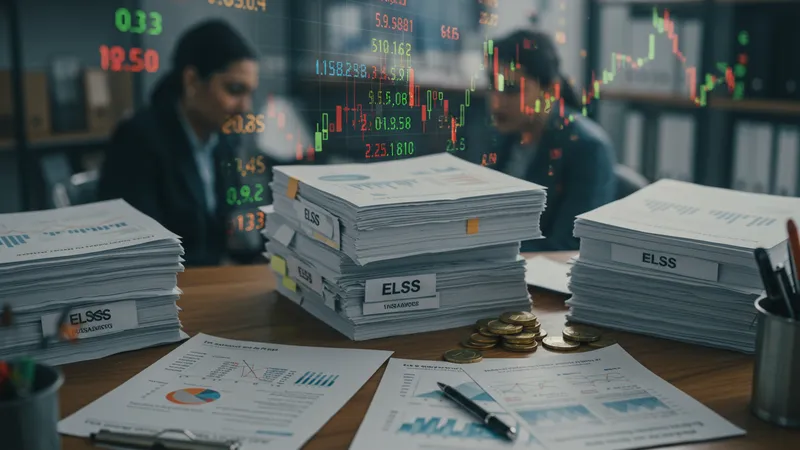
Many believe PPF is the go-to option for risk-averse investors. Its government backing offers an assured return, making it a safe haven for conservative savers. But did you know that some private ELSS funds have significantly outpaced PPF returns over the past decade? Comparing the security of PPF with potential ELSS gains can shift your approach to saving entirely. But that's not even the wildest part…
Digging deeper into ELSS, you'll uncover that its strength lies not just in returns but in its liquidity. With a lock-in period as short as three years compared to PPF's fifteen, ELSS offers flexibility many are unaware of. This liquidity means you can reinvest gains faster, potentially multiplying your wealth much quicker. But again, that's just the surface — there's a twist that most financial advisors have yet to uncover…
Stay tuned as we unravel these complex financial instruments, revealing insights and tactics that even seasoned experts found astonishing. What happens next shocked even the experts…
ELSS, or Equity Linked Savings Scheme, can be a game changer for savvy investors. With its equity exposure, ELSS provides potentially higher long-term returns than conventional PPF savings. An often-overlooked advantage of ELSS is its dual benefit: not only can it save taxes, but the equity component offers capital appreciation possibilities. Surprisingly, many investors miss out on the magic of compounding in ELSS, a benefit that can transform their financial outlook significantly.

Statistics show that ELSS funds have delivered an average annualized return between 12% to 15% over the last ten years. Compare this to PPF’s 7% to 8%, and the potential growth in ELSS becomes a tantalizing option for the adventurous investor. However, it's essential to remember that with higher returns comes higher risk, and the market’s volatility can be a double-edged sword. But there's one more twist…
Investments in ELSS let you tap into professional fund management. This management means your money is in the hands of skilled fund managers contending with market fluctuations, enabling first-time investors to dip into equity investments with less anxiety. The balance of risk and reward in ELSS is tempting, but the real game-changer lies in the tax benefits it offers under Section 80C. What you read next might change how you see this forever.
The three-year lock-in affords ELSS an edge over most tax-saving instruments, especially in terms of generating compounded returns. This relatively short lock-in can empower nimble financial strategies, providing investors opportunities to reassess and reinvest. The potential impact on one’s financial portfolio is unimaginable when harnessed correctly. But the real story unfolds with a unique feature that sets ELSS apart in a big way. Get ready to dive into the core of what makes ELSS such an intriguing asset…
The Public Provident Fund (PPF) is synonymous with safety in the tax-saving world. It stands as a government-backed sanctuary for those who prioritize security over the allure of higher returns. The PPF instrument, with its tax-exempt interest and principal, ensures a worry-free compounding over its 15-year term. The peace of mind afforded by PPF is unmatched, particularly for those inching toward retirement or those adverse to risk. But PPF's consistent return factor isn’t the only reason it remains popular.
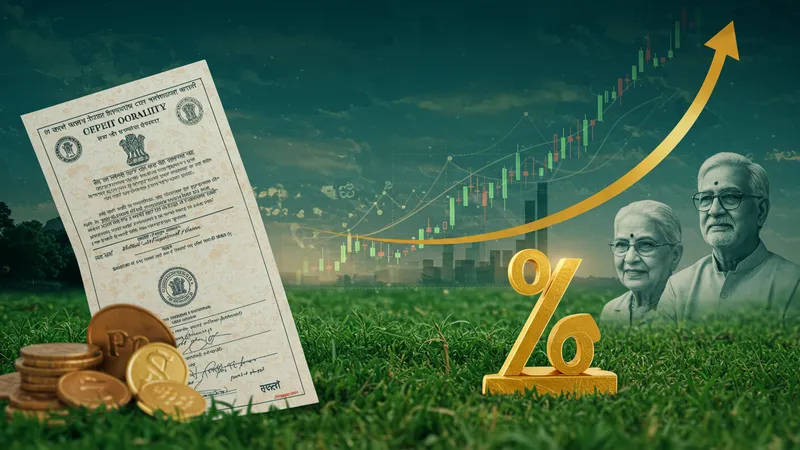
PPF's role as a strategic financial tool cannot be overstated. Beyond mere safekeeping, it complements more aggressive portfolio elements like ELSS or mutual funds. Despite its longer lock-in period, partial withdrawals are available under specific conditions, which doesn’t hamper its role in your financial strategy. Imagine leveraging your PPF alongside more aggressive investments: the potential for wealth creation is substantial. But that's not even the half of it…
One hidden advantage of PPF is its suitability for cross-generational financial planning. Parents frequently open accounts for minors, laying a strong financial foundation with nearly guaranteed returns. Compounded interest over time grows exponentially, securing educational or other future expenses without the burden of additional taxes. Such foresightedness can redefine generational wealth building strategies. Yet, one hidden benefit remains largely unacknowledged by the masses…
The role of PPF in asset protection is another aspect many overlook. In times of financial distress, the fact that PPF cannot be attached under court decree is a safeguard against economic upheaval. While other investments may falter under external pressures, PPF is untouchable, offering a shielded avenue for ensuring financial security in tumultuous times. This invulnerability makes it an indispensable weapon in the financial arsenal, yielding unexpected advantages when most needed.
When you’re knee-deep in the world of financial products, it’s easy to overlook the minutiae. But those “hidden” costs in ELSS can eat into your returns like unseen termites. ELSS funds carry expense ratios, administrative fees that sometimes cross 2% of your investment. If unchecked, over the years, these can compound dramatically, draining hard-earned gains. Understanding and managing these costs become imperative in optimizing your tax-saving potential.
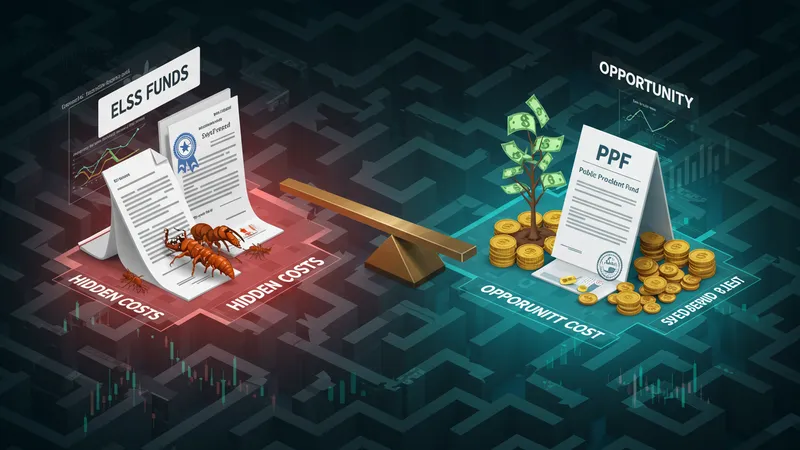
The PPF, conversely, doesn’t levy such fees but carries its own cost–opportunity cost, to be precise. With PPF’s interest rates fixed and often lagging inflation, you might miss out on returns that could have been achieved elsewhere. This trade-off between fixed returns and inflationary risks presents a dilemma that few consider deeply. But it doesn’t end there…
Both ELSS and PPF occupy different positions on the risk spectrum. ELSS’s equity exposure brings along inherent market risks, which could either rapidly multiply your wealth or leave you reeling in loss. PPF's structured safety ensures consistent returns but limits potential gains. Balancing risk and opportunity requires careful consideration — often more than a simple calculation of return on investment (ROI). But the real revelation is just around the corner.
The story doesn’t end merely with a calculation of returns or risks; it thrives on diversification. Combining the high-growth, tax-saving potential of ELSS with the guaranteed return profile of PPF can be the keystone to a robust financial strategy. This synergy could potentially neutralize the weaknesses of each, creating a personalized portfolio aligned with your risk tolerance and financial goals. What you discover here may forever alter how you approach investment planning.
The strategic blending of ELSS and PPF is not just about juggling numbers but about harmonizing diverse financial goals. One offers potential growth aligned with equity markets, the other steadfast assurance backed by the government — together, they are a match made for savvy portfolios.
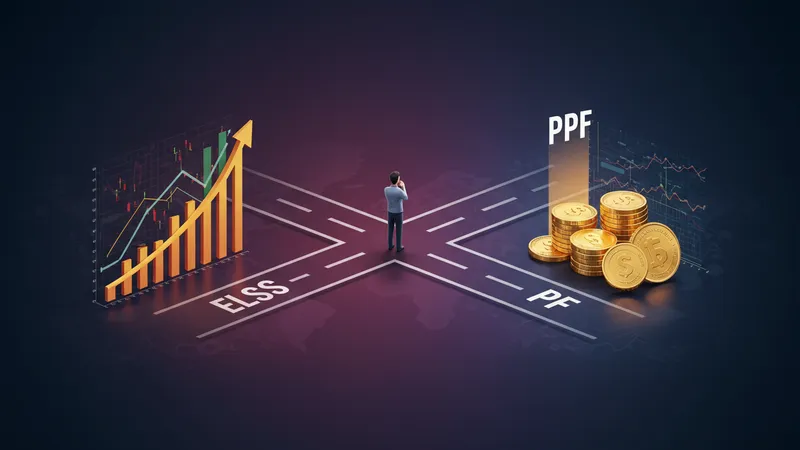
Investors often fall into the trap of picking sides, shutting doors to untapped opportunities. By assessing your personal risk appetite and financial goals, utilizing both ELSS for aggressive growth and PPF for stability ensures you capture different market facets. Surprisingly, few financial advisors focus on this balanced approach — they usually push one over the other.
The key lies in a strategic allocation, potentially altering the makeup of your entire investment strategy. Navigating between these instruments allows for utilizing market upswings with ELSS while securing a financial safety net with PPF. The balancing act is delicate but rewarding, offering security coupled with exciting growth prospects — an investment dance rarely choreographed.
This balanced strategy diminishes both individual drawbacks: PPF’s low-risk low-return and ELSS’s potential volatility. By diversifying your tax-saving strategy, you could potentially compound annual growth significantly, creating not just wealth but financial resilience. For many, this harmonious strategy is the ultimate investment revelation. Yet, the final twist is something no one expected.
Ultimately, choosing between ELSS and PPF cannot rest solely on numbers or trends; it’s intensely personal. Each individual has unique financial goals, differing timelines, and varied risk appetites that fundamentally influence this decision. Listening to cookie-cutter advice is tempting, but customizing your portfolio to align with personal objectives is where true financial empowerment lies.
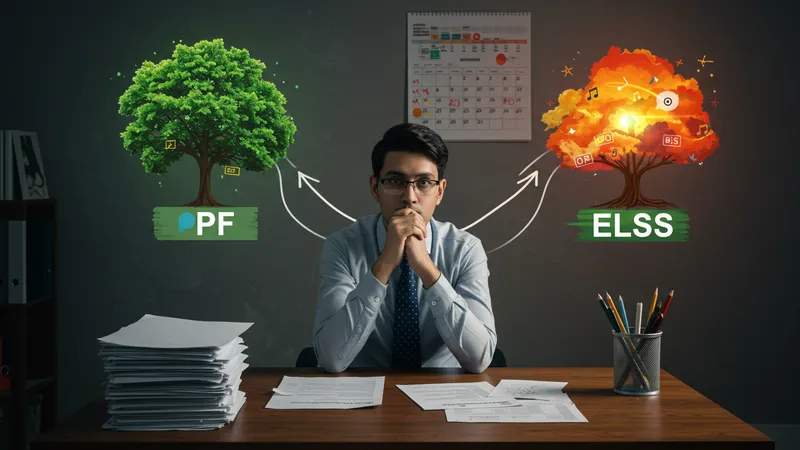
Review your horizons: are you preparing for upcoming educational expenses or building a retirement corpus? Is immediate liquidity crucial, or is a guaranteed rate your safety net? Consider these factors before committing to PPF or ELSS. But here’s something often ignored — your financial priorities might shift over time, and so should your investments.
Flexibility becomes the key theme for a successful financial journey. Regularly revisiting your investment strategy could unearth new opportunities and improvements. Deciphering life changes and market developments helps to recalibrate the balance, ensuring you’re consistently aligned with the best tax-saving avenues. And do you know what looms as the best practice in this ever-evolving space?
Engaging with a financial advisor who respects your personal narratives while suggesting best practices can make an unparalleled difference. The blend of professional insight with personal adaptability creates a robust financial plan. As you’ll find, the ongoing dance between ELSS and PPF isn’t the end of the story. It's merely the beginning, guiding you towards uncharted financial exploration.
Governmental policies exert a powerful influence on tax-saving schemes like ELSS and PPF. Taxation laws and interest rate settings are subject to fiscal policies that can shift the financial landscape overnight. Analysing recent policy trends indicates an inclination towards boosting equity-linked securities, aligning changes with economic stimulus measures to drive growth.
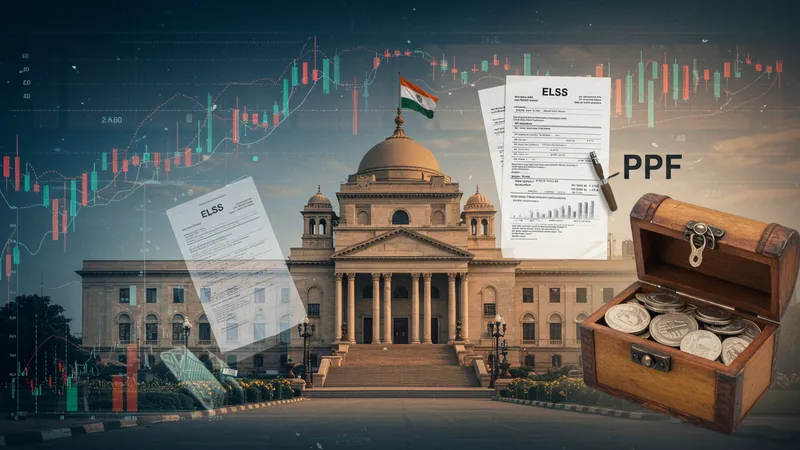
On the other hand, legislation protecting PPF’s status as a safe investment remains strong. This assurance signals governmental intent to support conservative investors, often offering untouched benefits to long-standing contributors. But these stances can alter with changing administrations, requiring vigilant attention to legislative changes.
Understanding these shifting currents can empower informed investment decisions. Policy changes typically hint at upcoming financial trends, giving proactive investors a crucial advantage. By staying aware of upcoming amendments and economic announcements, investors can safeguard their tax-saving plans against unwanted surprises.
However, the real surprise comes when government shifts aren’t just drawbacks but can unlock unexpected advantages or opportunities in your tax-saving strategy. Following these nuances closely is vital to maximizing returns while ensuring compliance and security. As you’ll discover, keeping a weather-eye on the horizon yields surprising benefits in the tax-saving world.
In the face of uncertainties, the art of maximizing returns while minimizing risks lies in a carefully crafted investment strategy involving ELSS and PPF. Diversification becomes the cornerstone of this approach, combining high-return equities with safe, reliable assets.

Each investment in ELSS requires understanding market timing and fund selection carefully. Opting for funds with a proven track record managed by reputed asset managers can tilt the odds in your favor, despite potential market volatility. Meanwhile, the PPF remains an unfaltering asset, providing consistent returns to bolster your financial standing.
One strategic maneuver involves the laddering technique, where investments are staggered over time frames to balance liquidity needs and maximize growth gracefully. Applying this to both ELSS and PPF ensures consistent cash flow, metered risk exposure, and flexibility to adapt to changing financial climates.
Surprisingly, most investors overlook leveraging tax-learning opportunities provided by both plans. With proactive tax planning, you can avoid knee-jerk reactions to policy changes, ensuring your investment remains tax-efficient. Remaining informed and strategic thereby becomes essential, making you not just a participant, but a master of your financial destiny.
Inflation is an invisible giant that constantly erodes the value of money, subtly influencing the effectiveness of ELSS and PPF investments. While ELSS initiative targets outpacing inflation, typically achieving higher returns than inflation rates, PPF faces challenges due to its fixed rates.
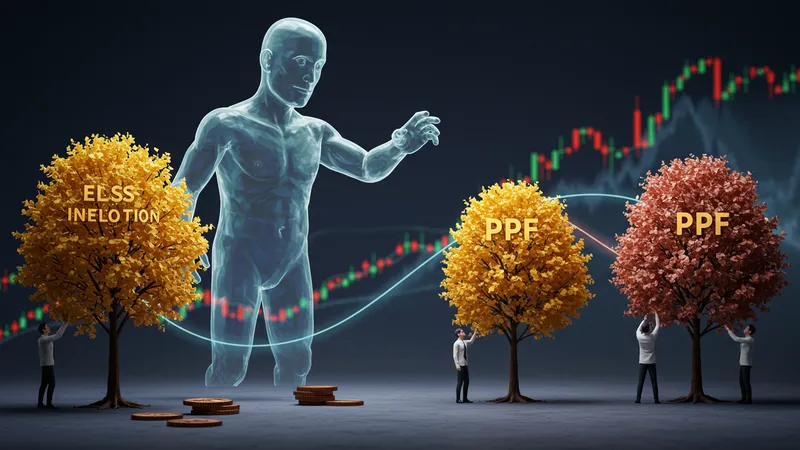
However, PPF’s interest revisions aim to stay aligned with inflationary trends. Over time, this ensures predictable, albeit stable, growth that can tame inflation's bite, provided the rates are periodically revised thoughtfully by the planners. ELSS's direct tie to equities often becomes a hedge, riding inflation waves and promising higher returns potential.
Staying attuned to macroeconomic indicators like inflation rates is an advantage savvy investors must embrace. When inflation fluctuates, the relative attractiveness of ELSS or PPF inversely shifts. Navigating these subtle economic currents requires foresight and adaptation, critical assets for maximizing investment health over an inflationary era.
Yet there's an unexpected complexity in how inflation affects your saving strategy. Often, investors ignore exploring hybrid solutions that can respond dynamically to inflation variances. By blending ELSS and PPF creatively, these hybrid approaches could reharness inflation's impact, propelling your financial strategy forward in unpredictable economies.
In the finance game, they say consistency beats complexity. Regular investments in ELSS and PPF can compel momentum and ride out volatility, even amidst economic storms. Practicing persistence through systematic plans, like SIPs for ELSS, lets you average out market highs and lows over time, potentially minimizing risks.

With a similar routine investment strategy in PPF, you fortify a solid safety net. Its disciplined savings perspective accumulates consistently, boosting cumulative growth through steady contributions. These habits, over time, embed savings discipline, crucial for long-term prosperity — a benefit often overshadowed by flashier strategies.
Beyond habit, regular investments invoke a psychological advantage; they instill financial confidence. When markets swing, the steady rhythm of contributions builds resilience and refrains you from impulsively backing out of growth opportunities. In this steadiness lies financial assurance, which few realize can be as impactful as financial returns themselves.
Harness the mental and financial strength of regular investments as this strategy transforms adherence to a financial freedom path. For countless investors, these habitual foundations are the hidden bedrock of prosperous financial futures. Embrace the power of habit today for a fortified financial journey into tomorrow.
One of PPF’s overlooked powers is its ability to nurture cross-generational financial growth. Parents frequently initiate PPF accounts for their children, laying solid financial groundwork that carries incredible long-term benefits, a lasting gift nurtured through compounding interest.
These accounts mature after 15 years, evolving into robust financial pillars for beneficiaries. This strategy barely scratches the surface of multi-generational wealth building, with future beneficiaries stepping into new financial roles seeded by today’s investments. It’s a quiet yet powerful legacy-building tool.
Also, the taxation arbitrage in PPFs works as a powerful wealth transmission mechanism, often immune to the taxes that accompany wealth transfers across generations. This intrinsic shield allows for a seamless financial transition, ensuring beneficiaries are well-protected and prepared.
Moreover, initializing PPF plans for minors presents a low-risk, high-reward scenario across time. Financial independence is cultivated early, with compounding interest nurturing their needs — whether education funds or first-time investments, a head start in their financial journey. For many families, this subtle, cross-generational gifting can shape future prosperity more than any other financial product.
Risk might be inevitable, yet understanding and controlling it within your investment portfolio can pay unimaginable dividends. In a diversified setup involving ELSS and PPF, leaning into different risk profiles becomes crucial.
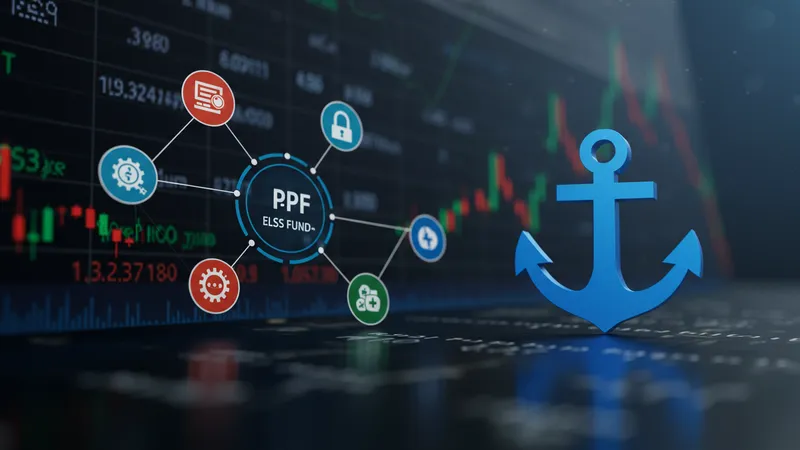
Consider a balanced portfolio comprising several ELSS funds, ranging across various equity sectors or themes. This ensures volatility is minimized through exposure to diverse market sectors. At the same time, PPF secures your foundation as a stable, all-weather holding.
Furthermore, entering the realm of advanced asset allocation strategies can bolster your standing tremendously. By delegating risk functions across financial products appropriately, the comprehensive nature of this balanced setup can mitigate unforeseen market downturns, a power novice investors often disregard.
Echoing a prudent stance, rebalancing your investment portfolio periodically can align your risk tolerance with evolving financial needs and market variations. Strategizing with PPF as your anchor and ELSS for surge capacities can smoothen investment volatility while carrying you closer to your financial objectives. This balanced finesse might just be the key to mastering risk within your diversified investment realm.
Peering into retirement might seem daunting, yet strategizing with ELSS and PPF aligns a future focused on peace and prosperity. These dual investments, paired strategically with other instruments, can crystallize an idyllic retirement landscape.

PPF’s compounded growth carves out a shielded nest egg, facilitating smooth sailing in later years. Meanwhile, ELSS’s ability to capture market surges could propel assets further, adding vibrancy to a retirement portfolio. Effectively merging these allows for current risk and reward management with long-term stability.
However, most overlook combining these with additional pension plans or fixed deposits can further fortify your retirement strategy, converting diverse growth avenues into a holistic system. Drawing insights from comprehensive financial planning transforms the mere pursuit of growth into sustained financial security post-retirement.
The perfect marriage of steady PPF benefits, ELSS growth potential, and complementary financial products can ensure your retirement dreams materialize into a reality. This ensemble approach — securing peace of mind, health care, and lifestyle aspirations — signals the pathway many desire yet few manage. Guiding you to navigate the nuances marks this exploration into redefining your retirement ahead.
Embarking on a journey toward a sustainable financial future through the diverse power of ELSS and PPF provides the ultimate balancing act. These complementary products craft a tapestry of investments with elements of growth, stability, and tax benefits woven seamlessly together.
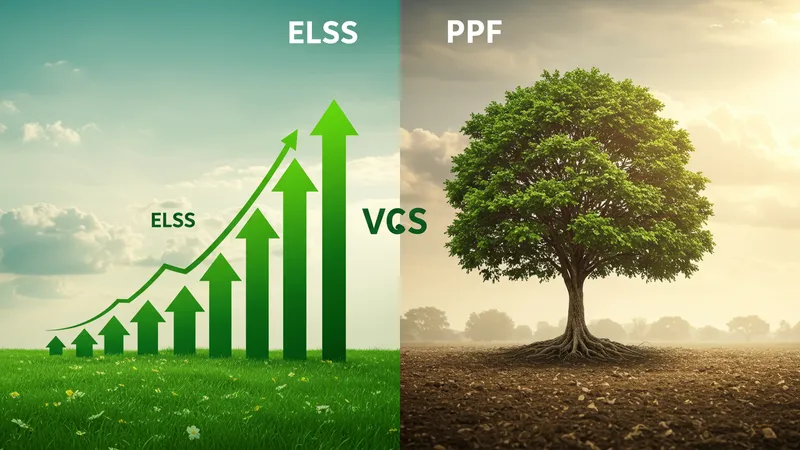
It’s not just about saving with yesterday's tools, but about adapting to today’s market dynamics while being poised for tomorrow's economic climate. Embracing a system where ELSS acts as the ever-agile growth-seeker and PPF as the vigilant guardian secures an enduring financial narrative for younger and older investors alike.
This investment blend evolves beyond mere monetary goals, transcending into a financial lifestyle enriched with strategy, foresight, and adaptive resilience. A learning viewpoint and adaptability unlock infinite potential, a perspective often absent among traditional tax-saving approaches.
At its core, this pursuit of financial balance creates not only future security but ignites present-day empowerment. Gear yourself with these adaptive frameworks to redefine your relationship with financial strategies, propelling the notion that sustained financial success is an attainable reality, inviting transformative growth for generations ahead.
Secure your path today; understanding how ELSS and PPF dynamically interact is only the tip of the iceberg. The insights shared are a call for action — dive deeper, explore holistically, and reframe your investment strategies for unprecedented growth and security. Share these revelations and become part of a new-age financial movement. The doors to a smarter future investment reality are open, with knowledge and action creating your legacy.